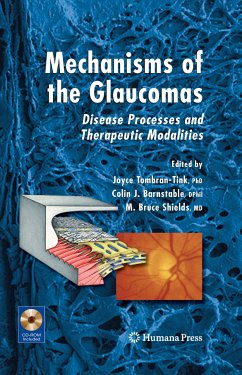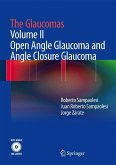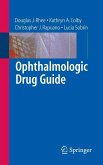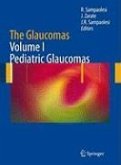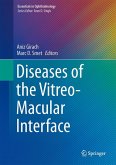(Pending)
The mechanisms of the various forms of glaucoma were unknown at the outset of the twentieth century. Late in the twentieth century, two nascent areas of research were beginning to provide glimpses of what the twenty-first century held in store for the future of glaucoma: the mechanisms of glaucomatous optic neuropathy and the molecular basis of the glaucomas. In Mechanisms of the Glaucomas: Disease Processes and Therapeutic Modalities, the authors review the most current knowledge available in the field and provide a basis in which researchers can effectively study the glaucomas. The intent of the book is not primarily to describe the clinical appearances of the glaucomas nor how to manage them. Rather, it is to provide basic scientists, who are working in the field of glaucoma, with a current understanding of the clinical aspects of glaucoma, and to provide clinician scientists with the basic knowledge, as they attempt to translate it into rational treatments for glaucoma. In this important new book leaders in the various fields of glaucoma review our current understanding of glaucoma from epidemiology and genetics through molecular, cellular and tissue responses to the mechanisms of the glaucomas and the mechanisms by which we manage them. Mechanisms of the Glaucomas: Disease Processes and Therapeutic Modalities will be of great value as its contents will aid the reader in prevention of blindness from glaucoma.
The mechanisms of the various forms of glaucoma were unknown at the outset of the twentieth century. Late in the twentieth century, two nascent areas of research were beginning to provide glimpses of what the twenty-first century held in store for the future of glaucoma: the mechanisms of glaucomatous optic neuropathy and the molecular basis of the glaucomas. In Mechanisms of the Glaucomas: Disease Processes and Therapeutic Modalities, the authors review the most current knowledge available in the field and provide a basis in which researchers can effectively study the glaucomas. The intent of the book is not primarily to describe the clinical appearances of the glaucomas nor how to manage them. Rather, it is to provide basic scientists, who are working in the field of glaucoma, with a current understanding of the clinical aspects of glaucoma, and to provide clinician scientists with the basic knowledge, as they attempt to translate it into rational treatments for glaucoma. In this important new book leaders in the various fields of glaucoma review our current understanding of glaucoma from epidemiology and genetics through molecular, cellular and tissue responses to the mechanisms of the glaucomas and the mechanisms by which we manage them. Mechanisms of the Glaucomas: Disease Processes and Therapeutic Modalities will be of great value as its contents will aid the reader in prevention of blindness from glaucoma.
Dieser Download kann aus rechtlichen Gründen nur mit Rechnungsadresse in A, B, BG, CY, CZ, D, DK, EW, E, FIN, F, GR, HR, H, IRL, I, LT, L, LR, M, NL, PL, P, R, S, SLO, SK ausgeliefert werden.

